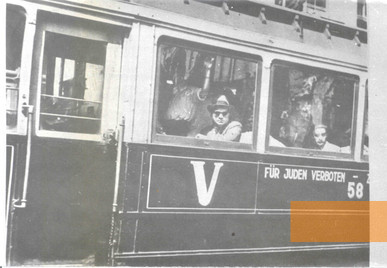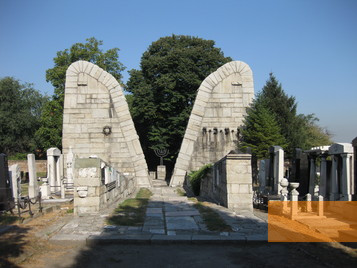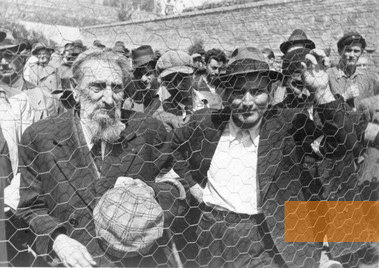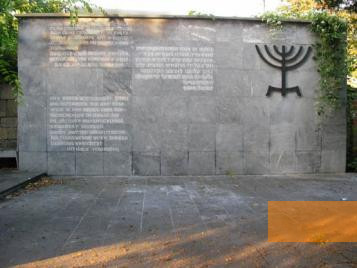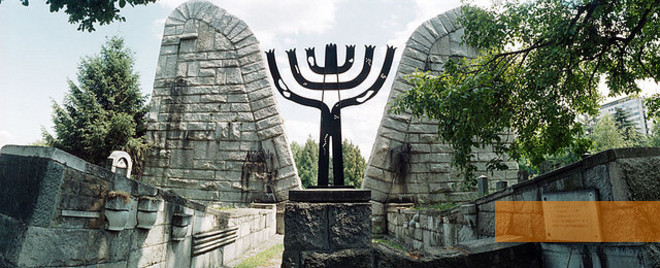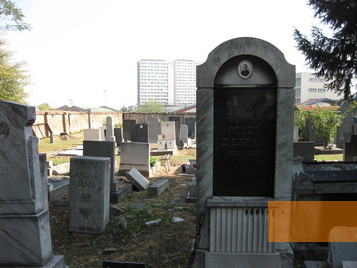A memorial on the Jewish cemetery in Belgrade has since the beginning of the 1950s commemorated the over 9,000 Belgrade Jews who were murdered by the German Wehrmacht or SS or deported to concentration camps from 1941 on.
The Serbian capital Belgrade was home to over 9,000 Jews in 1941. In April 1941, the German Wehrmacht and its allies conquered Yugoslavia. The country was divided among the invaders, and German units occupied the Serbian heartland. Immediately, they began taking measures against the Jewish population: Jews were excluded from public life, they were registered and forced to wear a badge on their clothes. In the summer of 1941, when resistance against the Wehrmacht formed, the Germans decided to take »retributive actions« against the Jews: For each killed German soldier, the Germans killed 100 Serbian men; for each wounded soldier, 50 Serbs were shot. The occupiers mostly chose Jewish men as victims of their »retribution«. Jewish women and children were initially spared. However, in the winter of 1941 they were deported to various camps, first and foremost to the Sajmište concentration camp at the Belgrade trade fair grounds (German: »Judenlager Semlin«). At the beginning of 1942, the Reich Main Security Office (RSHA) deployed a gas van to Belgrade. The Germans murdered about 6,500 prisoners of the Sajmište camp with motor fumes. Most of the victims were Jewish women and children. In the summer of 1942, the Belgrade commander of the security police and security service Schäfer sent the following report to his superiors at the RSHA in Berlin: »Serbia is free of Jews«.
Only few of the over 9,000 Belgrade Jews survived. Before the war, Serbia was home to about 12,500 Jews; all but 2,000 of the Jewish men, women and children were murdered by German units.
At the beginning of the 1950s Belgrade-based architect Bogdan Bogdanović was commissioned by the Jewish community with designing a memorial to the victims of the Holocaust, to be erected on the Sephardic Jewish cemetery. The approximately 10-metre high »Memorial to the Jewish Victims of Fascism« was dedicated on the cemetery in 1952. Each wing bears a Hebrew quote and a Star of David, and located between the wings is the sculpture of a menorah. The memorial on the Jewish cemetery of Belgrade was one of the first and at the same time one of the few memorials honouring the Jewish victims of the Holocaust to be erected in communist Yugoslavia. The remembrance culture in Yugoslavia was until the 1990s centred around commemorating the partisan struggle and honouring communist resistance fighters.
- Name
- Spomenik žrtvama nacizma na Jevrejskom groblju
- Address
-
Mije Kovačevića 1
11000 Beograd - Open
- The cemetery is accessible at all times.


